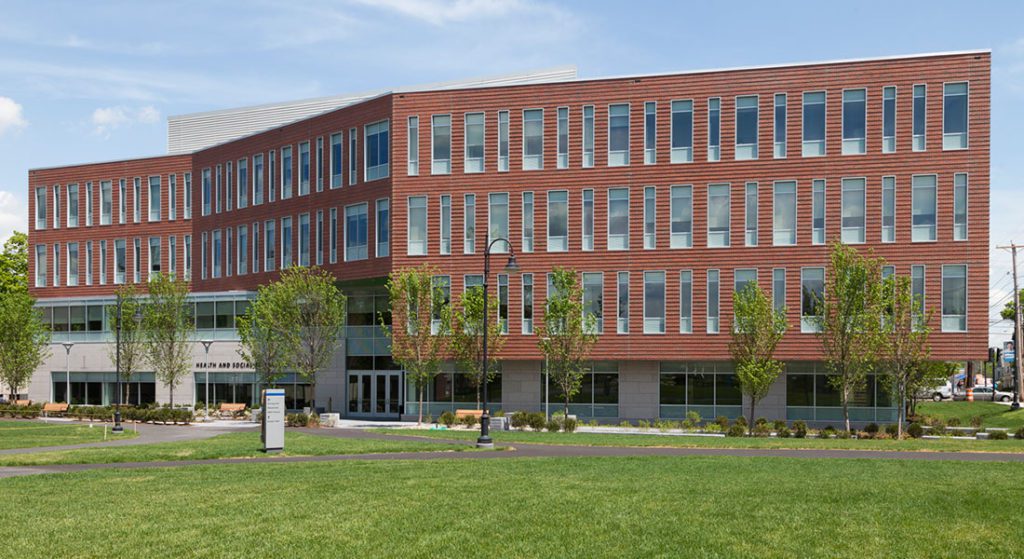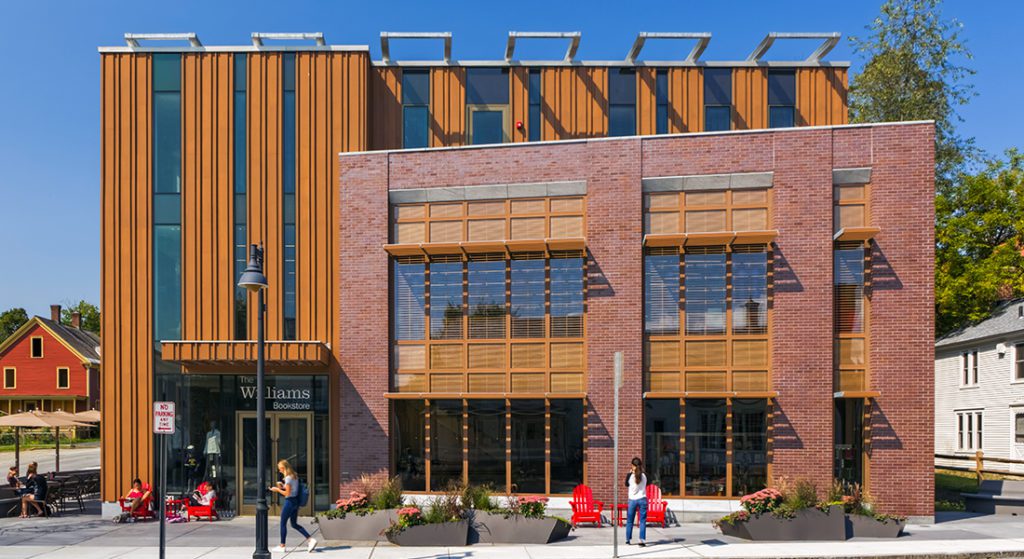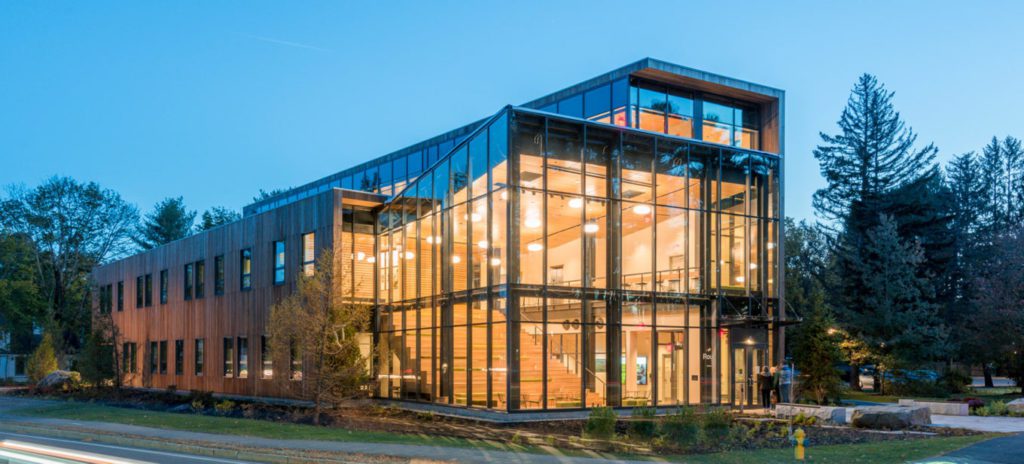LEED Design in Academic Buildings
College campuses often need additions, updates, or renovations to accommodate ever-evolving fields of study, technology expectations, and growing student bodies. Modern legislation and societal pressures encourage academic buildings to achieve a level of LEED Certification from the United States Green Building Council. Several factors must be considered for LEED Design in Academic Buildings and four important components for CambridgeSeven’s LEED design efforts are:
- Performing Feasibility Studies
- Comparing Building Opportunities
- Sourcing Responsible Materials
- Optimizing Technology
Performing Feasibility Studies
Assessing space utilization, existing building systems, and building envelope performance are the key initial steps of sustainable design to weigh options of design and construction that enable informed decision making. Schools with underutilized or vacant space that no one wants to use because it’s uncomfortable or outdated can benefit from a modest renovation or adaptive reuse in which the space is architecturally transformed. Campuses that require additional space can take advantage of an architectural addition, new construction or renovation that provides desirable space. During feasibility studies, we consider the institutional needs to right-size and future-size, while working within the project budget and site parameters to develop design options that achieve the sustainability goals and programmatic visions identified.
Comparing Building Opportunities
Feasibility Studies reveal building opportunities for new builds, renovations, and expansions. It’s arguable that the most sustainable design uses existing structures, minimizing CO2 emissions that are inherent in construction. The practice of adaptive reuse has gained much popularity for architects, especially those practicing in older cities, like Boston, with numerous old, retired buildings. However, it can be more challenging to retrofit an existing building with sustainable, LEED accredited, features as opposed to one that’s newly built.
New construction provides the opportunity to alter a campus’ fabric by shaping a new campus green space, creating a barrier from street noise, and incorporating new places of rest and gathering. New site selection also considers the availability of sunlight, access to other parts of campus or local transit, and effects on local flora and native plantings.

Sourcing Responsible Materials
Building material selection is much more than creating beautiful facades – facades that students and faculty will have to look at for a long time! Selecting building materials for sustainable design entails understanding of product durability, local resources and regional markets. Typically, more local means more sustainable. Using local building material decreases the need for fossil fuels in transporting materials from long distances. This in turn reduces air and water pollution associated with transportation and supports the local economy.

Optimizing Technology
Active and passive technologies can be used in numerous ways to make more sustainable building choices for campuses. Even in lab and research buildings that require heavy, energy-consuming equipment, architects have options to specify materials and equipment for energy savings. Some options include:
- Low-energy recirculating hoods in labs
- Rainwater reclamation systems
- Automatic daylight shading to reduce the need for artificial lights
- Passive heating and cooling systems to replace or assist forced air

Implementing LEED Design in Academic Buildings is a very achievable goal for institutions and designers. With sustainability requirements becoming the standard in the building industry, it’s important for designers to rigorously explore the various possibilities for incorporating smart, efficient, and effective solutions. Of course, LEED goals aren’t only applicable to academic clients. We’ve successfully achieved LEED certification on the following academic projects:
- Roux Center for the Environment, Bowdoin College – LEED Platinum
- The Williams Bookstore, Williams College – LEED Platinum
- The Williams Inn, Williams College – LEED Gold
- Pulchino Tong Business Center, UMass Lowell – LEED Gold
- Rosenstiel School of Marine and Atmospheric Science, University of Miami – LEED Gold
- WBUR CitySpace, Boston University – LEED Gold
- Boston Children’s Museum – LEED Gold
- Health and Social Sciences Building, UMass Lowell – LEED Silver Plus
- Recreation and Athletic Center, Babson College – LEED Silver
- Nettie M. Stevens Science and Innovation Center, Westfield State University – LEED Silver
- Peter Buck Center for Health and Fitness, Bowdoin College – LEED Silver
- Watson Arena, Bowdoin College – LEED Silver
- Administration Building, Bowdoin College – LEED Silver
- Hard Rock Cafe, Honolulu – LEED Silver
- West Cambridge Youth Center – LEED Silver
- Museum of Discovery and Science – LEED Silver
- Four Seasons Hotel and Private Residences – LEED Silver
- Snell Center Dean’s Suite Renovation, Northeastern University – LEED Silver
- Greensboro SciQuarium – LEED Certified
This article was originally published April 10, 2020